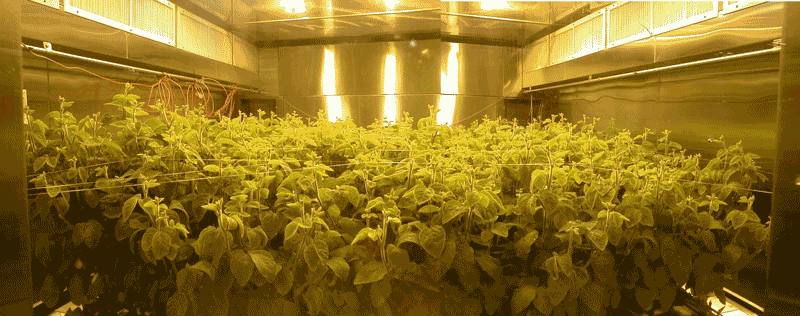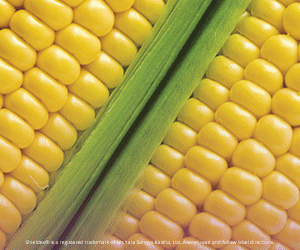Space research hits close to home
UNIVERSITY RESEARCHERS ARE CONNECTING THE DOTS BETWEEN SPACE AGRICULTURE AND EARTH-BASED PRODUCTION
advancing food production in space and improving your field management may sound like completely unrelated research topics. But according to experts at the University of Guelph, Ontario grain farmers will be interested in the study of biological life support systems because they can harvest the benefits of their research findings.
“Our research is pulled by the demand for technology development in space but it’s driven by the technology transfer to Earth-based agriculture,” says Dr. Mike Dixon, professor and director of the Controlled Environment System Research Facility.
Founded in 2001, the facility is home to research focused on the contributions that plants make to human life support and how food can be produced beyond Earth’s atmosphere.
Dixon and his team study plant growth, gas exchange, volatile organic compound evolution, nutrient remediation and other functions in precisely controlled environments. The research facility is equipped with 24 sealed chambers including nine variable pressure hypobaric chambers which allow researchers to grow plants in controlled environmental conditions.
RESEARCH MISSION
The role of plants in space spans beyond food production and also includes oxygen evolution, carbon dioxide uptake, fresh water recycling and psychological well-being.
“We know that plant production is limiting the equation of how long space travel can be, so we’re learning about the technical challenges associated with growing food in space and figuring out what crops have the greatest potential to perform,” he says.
PLANTS UNDER PRESSURE
Corn, wheat, soybeans and barley as well as horticultural crops such as lettuce and radish are among those that Dixon’s team are growing in controlled environments. For each crop grown in the chambers, the goal is to decrease pressure as low as possible and monitor changes in production.
CONTROLLED ENVIRONMENT SYSTEMS RESEARCH FACILITY, UNIVERSITY OF GUELPH

Much to the delight of the space industry, all of these crops have surpassed pressure hypotheses. “We used to think that plants would not be able to survive with half of Earth’s atmospheric pressure but we now know that crops can survive with as low as one tenth of the pressure,” says Dixon, noting that oxygen is the main limiting factor of survival ability.
COMPARING ENVIRONMENTS
It seems natural that plant production in space poses a unique set of technical challenges that traditional agricultural research has not conquered. Everything that researchers know about agriculture today has to be revisited given space conditions so it’s going to take generations of scientists to fill in the blanks, says Dixon.
But space agriculture also has some issues in common with food production as we know it. He says that minimizing environmental impact and optimizing production efficiency are issues facing agriculture on Earth and are even bigger issues in space.
CONNECTIONS TO ONTARIO AGRICULTURE
One of the unique aspects of this research is its wide range of applications. “While we’re making strides in space research, Earth-based agriculture is the beneficiary for technology transfer,” says Dixon.
The most obvious connection to agriculture in controlled environments is greenhouse production in the areas of air quality, lighting and automated sensor technology. But Dixon says other Ontario growers can also benefit from research findings.
In collaboration with the Canadian Space Agency and the University of Florida, his team is working on a project to use chlorophyll florescence as an assessment of plant stress. A sensor is attached to the plant and sensor data is analyzed to determine stress levels. “While we use sensor systems in chamber studies, water and nutrient stress in recently transplanted nursery trees are also a focus of this project so this research can apply to field agriculture as well,” says Dixon.
Research in ion sensor technology is another area of research that Dixon believes growers can learn from. “The agriculture industry is being pressured to recycle water but we don’t have all of the technology to test for nutrient leaking,” he says. Controlled environment research has spurred the development of potassium and calcium sensors and hydroponic nutrient solutions are now a commercialization opportunity for agriculture.
Chamber technology itself can also be applied to improve mainstream agricultural research practices such as plant breeding. “We are currently growing corn in chambers and evaluating phenotypes under different conditions such as artificial drought,” he says. “Our results are significantly different than traditional field trials because we can say with certainty how a crop is going to react under precise conditions.”
GROWING OPPORTUNITIES
While there are currently no mission plans related to this research, Dixon believes there will continue to be a demand for space studies and says it could lead to exciting opportunities in the future. “We want to grow the first plant on the moon and there is a very real potential that we could do this and celebrate a Canadian space first,” he says. •







